Following on from Eating in Japan – Nagano and Matsumoto…
My sister and I travelled to the small town of Tsumago in the Kiso Valley. To get there, we took a train to Nagiso station before taking a bus to Tsumago. We were starving by the time we reached Nagiso station, and fortunately for us there was a small stand up udon shop right in the waiting area of the train station!
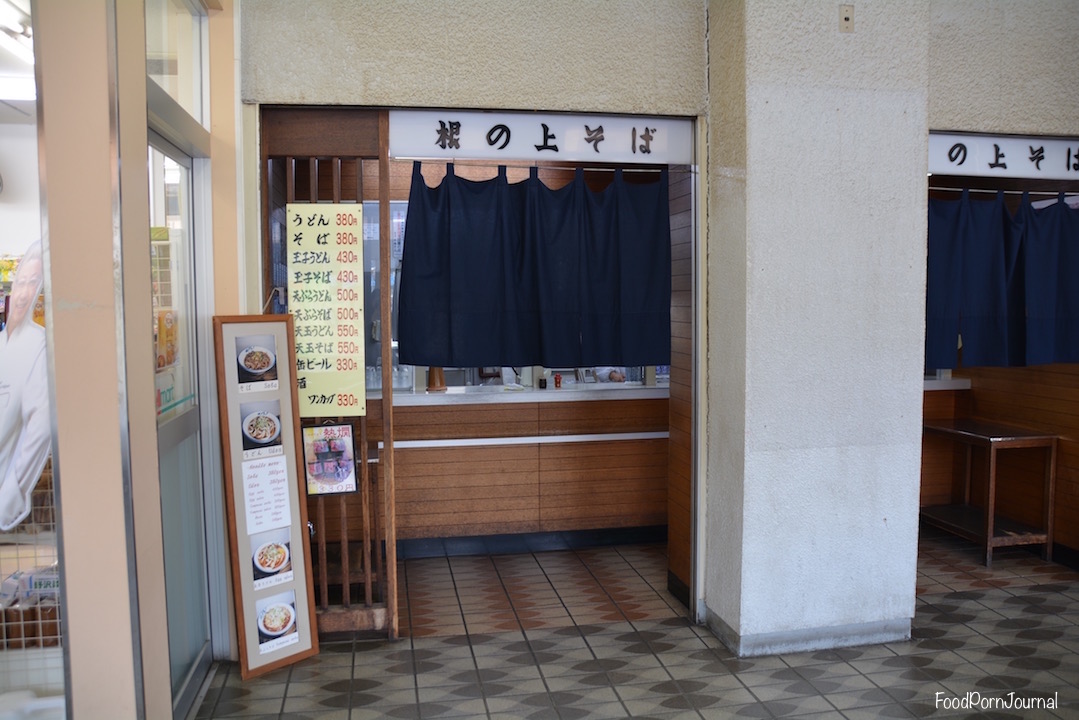
One bowl of plain udon only set me back ¥380 or about AUD$4.50. So cheap! It was nothing special but I loved the generous serve of udon in a hot broth. Yes we had to stand while eating, but after a long train ride, we were both happy to stand for a while.

Tsumago
Tsumago is one of the best preserved Edo-era post towns in Japan and it was highly recommended that we stay at least one night in the town in one of the ryokans (traditional Japanese inns) or minshukus (family-run Japanese style bed and breakfasts). We decided to stay at Fujioto Ryokan for one night and arrived just after midday. There’s really just one main street that goes through the entire town. The buildings were gorgeous!

We came across a small souvenir shop that sold ice cream and gohei-mochi on the side. Gohei-mochi is very popular in the area and is sold as a street food snack. It’s basically white rice pounded into a sticky rice cake, covered in a sweet paste made from grinding nuts, soy, sesame and other items, then grilled. I watched as the shop keeper coated the rice cake in the pre-made stick paste.

It then took about a minute to cook on a hot grill.

A nice savoury snack with a lovely nutty flavour and some charcoal bits from the grill. Very filling with all that rice.

After an afternoon strolling through the town, it was time to check in and just relax back at the ryokan. We paid ¥21,600 for one night twin share. Expensive but it was worth it. The accommodation included kaiseki (a traditional Japanese multi-course dinner) in the dining room. It was my only opportunity for kaiseki the entire trip and I was very pleased with my first encounter. After a shower, and dressed in our yukata robes and yukata coat, we were shown to our table in the dining room. After some tea was poured and the kaiseki explained to us, the first dishes arrived.

Course 1 – a tasting plate of local specialties including local charred trout caught from the river and salted on the outside, fried baby wasps which takes them a long time to capture (involving tying a piece of meat on a string for the adult wasps to take to their nest, and someone physically chasing after them to find the nest), grilled chicken, sushi roll filled with green tea soba and wrapped in omelette, fried potato with miso and gold leaf, wasabi sticks, yam potato with pickled plum and candied citrus. We were even given a small Japanese lucky charm and a cherry blossom that was placed on the plate.

Course 2 – tempura vegetables with a gorgeous decoration made from tree seaweed and rice powder. How delicate dies it look? We were also given a tiny bowl of green tea powder to sprinkle over the tempura to add some extra flavour. Simple, crunchy and just beautiful.

Course 3 – Shinshu salmon sashimi in two different cuts with shiso leaf. The leaf was similar to mint and was very refreshing.

Course 4 – Hoba-miso Shinshu beef steak with home made miso paste. This was cooked at the table by lighting a small flame underneath. Our host told us that Shinshu cows are fed beer hops and then given a massage to ensure their tenderness! It sure was tender and tasty.
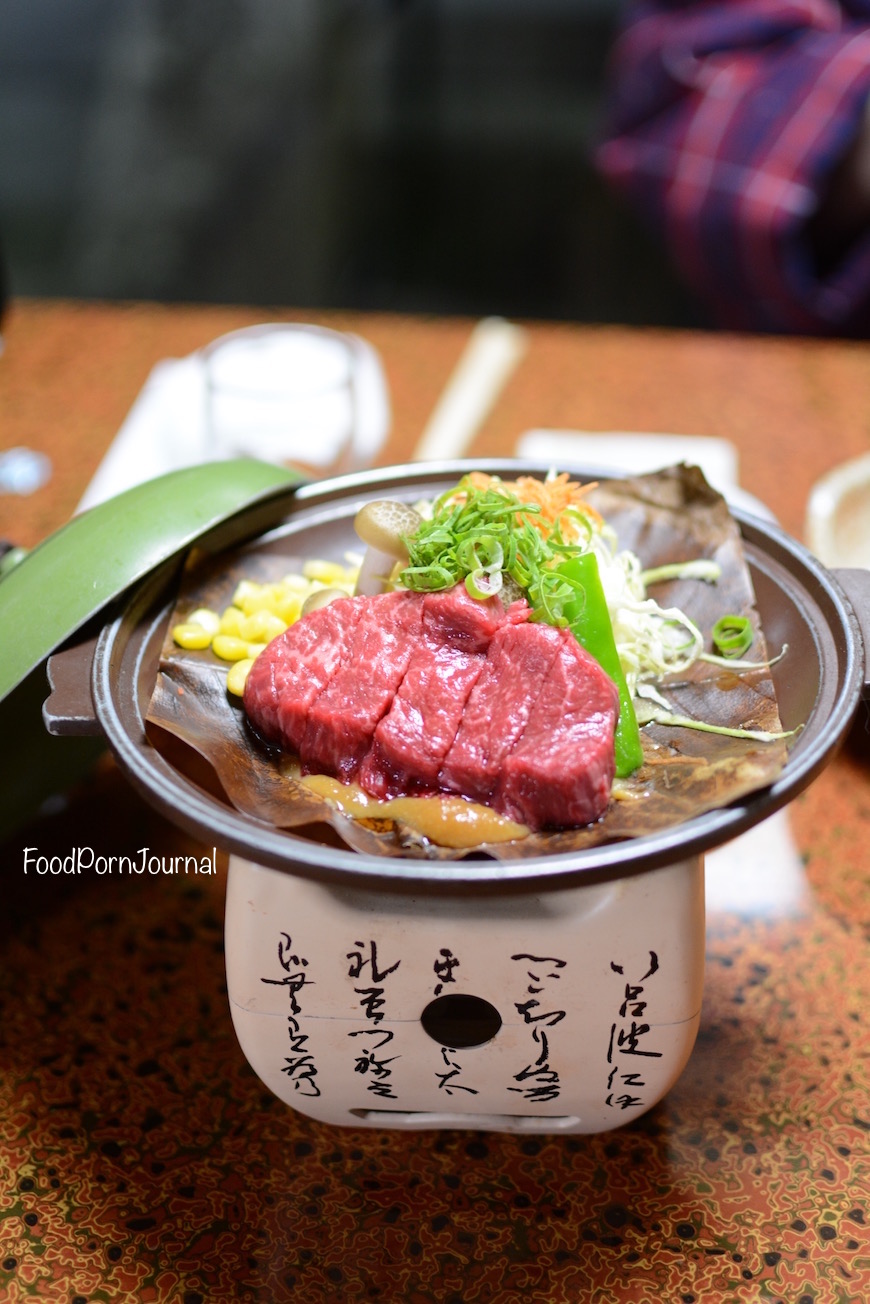
Course 5 – pickled mushrooms, cucumber and cherry blossom. The cherry blossom was too sour for me – an acquired taste.

Course 6 – seasonal boiled vegetables of mushroom, potato, carrot, daikon and pumpkin sauce over the top. I absolutely loved the pumpkin and had to stop myself from licking the bowl.
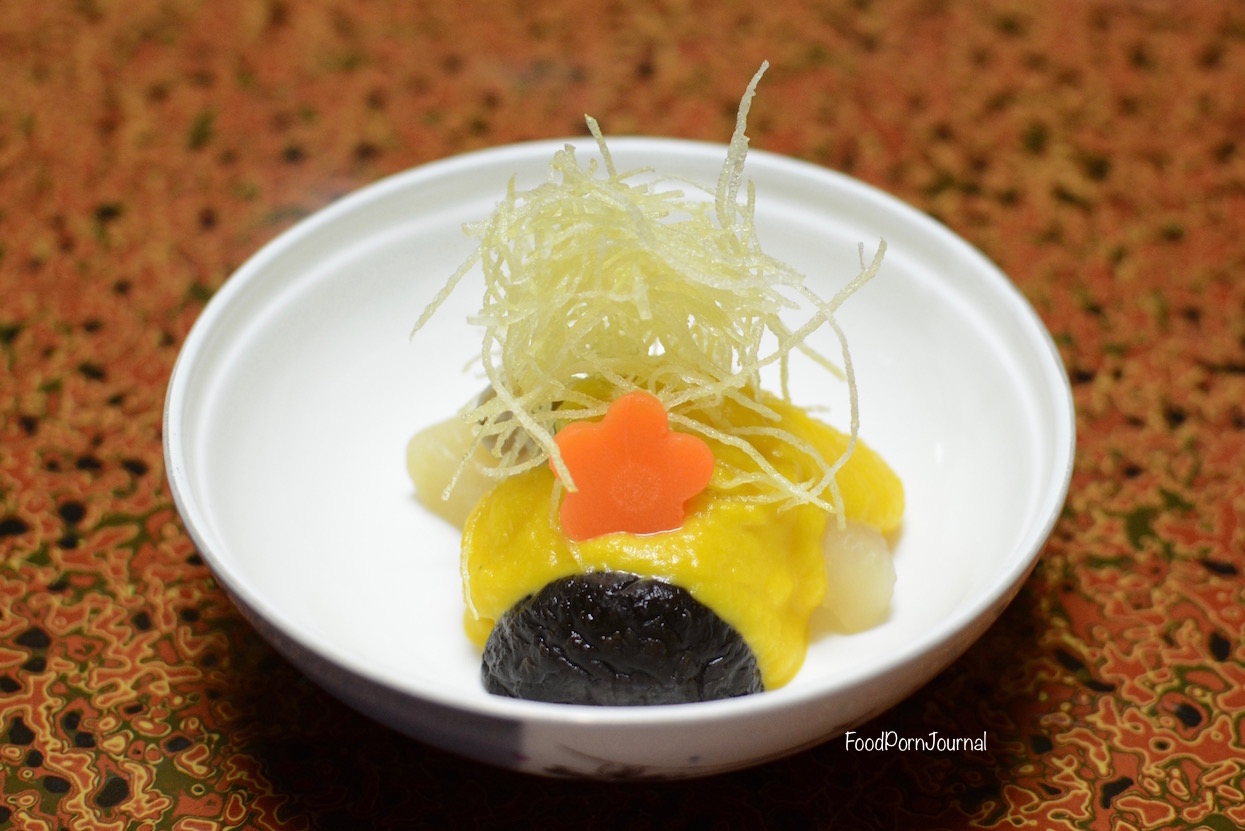
Course 7 – local chicken osuimono soup with a small chicken meat ball covered with a thinly sliced daikon.

Course 8 – house made gohei-mochi (the second time I had it that day!)

Course 9 – dessert of green tea sponge cake (so light and fluffy) and rabbit shaped slices of apple.

We were both absolutely stuffed after all of that food. The service was just exceptional. The owner’s daughter was our host that night and talked to us about each component of the dishes in front of us, telling us funny stories and giving us background on where the produce was obtained. We felt so welcomed and it was like we had stepped into someone’s home. A must try! We found out the owner spoke English, Spanish and Italian on top of Japanese after many travels when he was younger. The ryokan has been passed down through the generations. There are strict rules due to the preserved town status. The ryokan can never be sold, and if there is no family member to pass it to, the building will go to the government.
Breakfast at the ryokoan the next morning consisted of grilled fish, tamago, pickled vegetables, mushrooms, boiled potatoes, rice and miso soup. This was where I learned how to properly eat nori (dried seaweed) on rice. There’s a whole technique to it – pick up a sheet of nori with chopsticks, lightly dab the middle of the sheet into soy sauce, gently place it on top of your rice, then scoop up a ball of rice using chopsticks so that the nori covers the rice ball (and sticks to the soy sauce) and pop into your mouth. It’s easier seen than read.
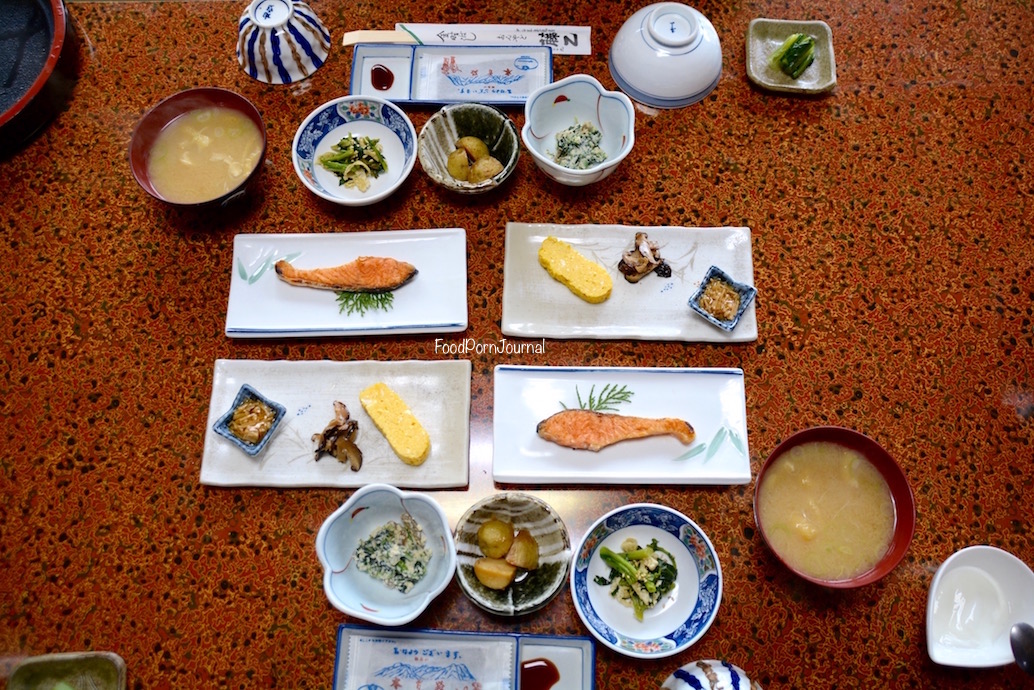
The savoury breakfast was then finished off with yoghurt and diced sweet Shinshu apple. Yum.

We said goodbye to the lovely owners and staff at Fujioto Ryokan and then travelled to Takayama.
Takayama
On the hunt to try as many flavours as possible, I tried some sake ice cream on the streets of Takayama. The best way I can describe it is sweet and sort of like lemonade.

My sister purchased dome dango, a Japanese dumpling made from mochiko (rice flour). This one was covered in soy sauce and slightly charred. I think I prefer the sweet versions to the savoury.
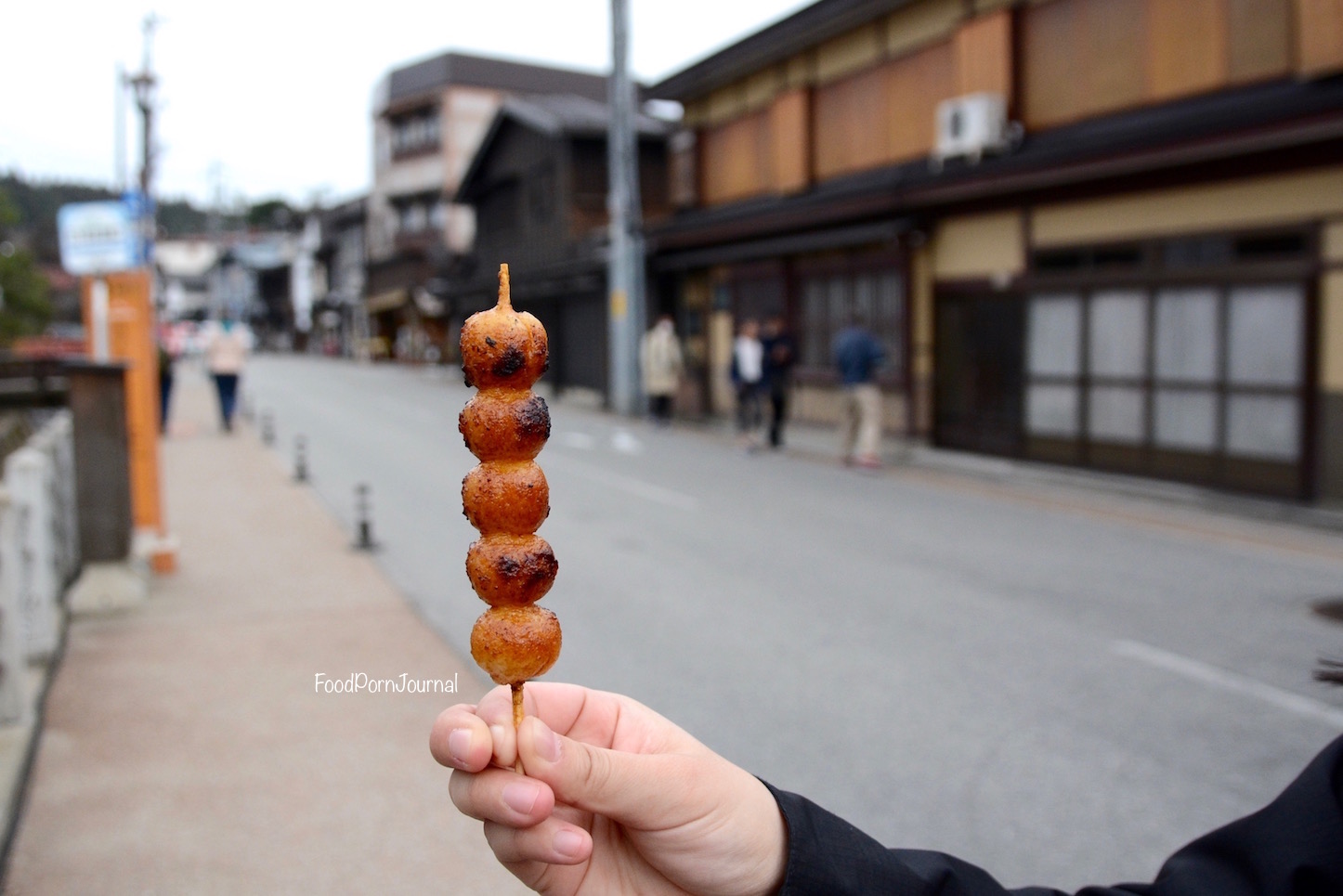
After sightseeing at the many temples, we had made our way to Takayama Old Town, where many of the merchant buildings and houses had been preserved.
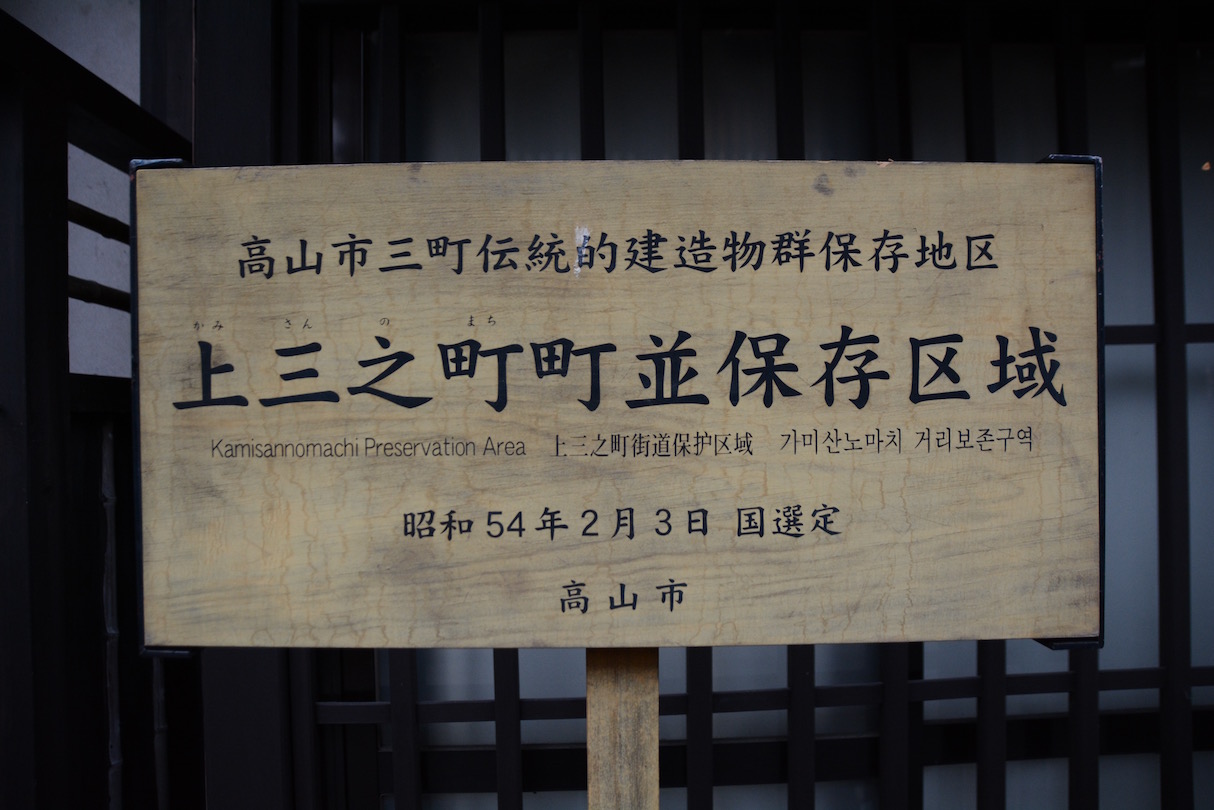
Through the main street, there were several souvenir, clothing and food shops.

One of my stops was at the Hida beef bun shop. Takayama lies within the Hida region, so I was very curious to try some local beef. I had also read that it was a must try in the region.

There were lots of buns steaming away in bamboo steamers inside.

I think one of these set me back ¥500. I remember it nearly burnt my hand while I was holding it out to take a photo.

Inside, there was slow cooked beef in a wonderful gravy. The steamed bun was a lot thicker than expected but it worked. Nice and fresh straight out of the bamboo steamer.

For something sweet, we stopped by a small cafe (not sure of the name) that served coffee, ice cream and sundaes. I chose the matcha sundae with red bean, matcha mochi, vanilla ice cream and matcha cream. A nice little afternoon treat. My sister chose the chocolate and coffee sundae (as there was no plain chocolate version), but found there was too much coffee in it for her liking.

That same cafe also sold what looked like takoyaki but the sweet version stuffed with custard or chocolate.
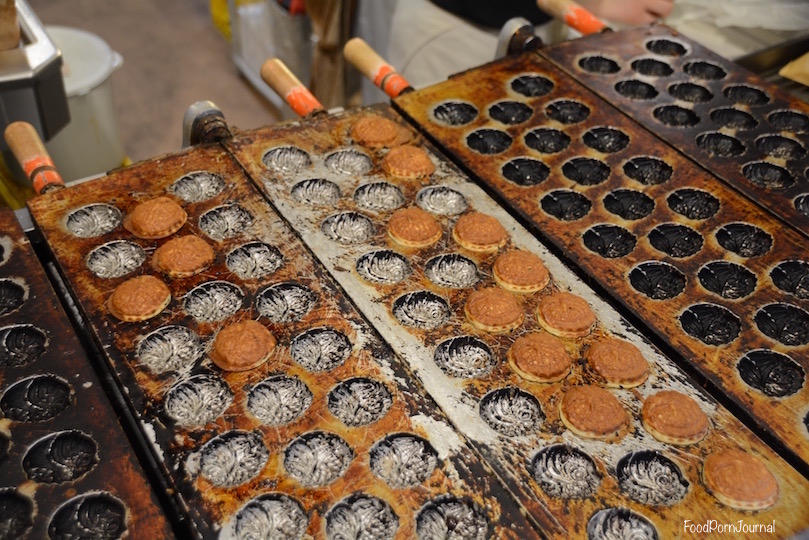
There were various other food stalls in Old Town but I after the sundae, I was no longer peckish.

This store had a massive queue of at least 10 people lining up for sushi. I have no idea what it was called (no English signs) but it must have been very popular. It sold out quickly but then again, it was mid-afternoon and past the lunch time period.

My friend told me that I had to try Hida beef BBQ style on a sizzle plate while in Takayama. Hida Beef comes from a black-haired Japanese cattle breed, raised in the Gifu Prefecture for at least 14 months. ‘It is required to have been confirmed and certified as Yield Score of Grade A or B by the Hida Beef Brand Promotion Conference, and have a Firmness and Texture Grade of 5, 4 or 3 as graded by the Japan Meat Grading Association.’ (http://www.hida.jp). So for dinner, my sister and I arrived early at Maruaki Hida Beef. It was about 5.30pm and we were the first to place our names on the wait list as we didn’t have a booking. Good thing we were early as by the time we left, the queue wrapped around the entire waiting room. After a 10 minute wait, we were shown to our table. Maruaki has a butcher next door to the restaurant and a friend told me you could choose your cut and have it cooked in the restaurant. As neither of us speak Japanese, we didn’t know how to enquire about that and it didn’t seem to be on the menu. There was a deep pit in the middle of the table for the hot coals and our grill. I won’t lie. Prices were expensive. We ordered the Hida Premium Beef plate (grade A 5) that included three cuts of Hida beef (¥6,300 or about AUD$75). The menu stated this would be enough for 2-3 people so we were happy to fill up on beef. There was a buzzer at the table which gets the attention of one of the waitstaff who we placed our order with. It didn’t take long for the hot coals, sizzle plate, meat and some vegetables to arrive. As we looked down at the plate, we knew that we would not be full and the 2-3 people it would have fed must have been very tiny tiny people.

Nevertheless, the marbling in the beef looked amazing. We started cooking and salivated at the meaty aroma. The beef just melted in my mouth. It was extremely flavoursome, almost buttery and so tender. Now I know what my friend was raving about. To die for! But it just wasn’t enough for the both of us. Honestly, I could have polished the whole thing off on my own and still have room left.

So we ordered the Hida lean beef sukiyaki (¥5,960 or AUD $71) which came with plenty of vegetables and soba. One of the wait staff cooked this for us at the table.

Again, deliciously juicy meat. Wow. We were full after this hot pot and I couldn’t finish my half of the sukiyaki. A very expensive dinner but I did really enjoy the Hida beef. Highly recommended if you like your beef!

The next morning, we wandered through the Miyagawa Morning Market in Takayama. The markets start at around 9am with make shift stalls along a road parallel to the river.

We passed a couple of stalls selling pickled items.

And a couple of stalls selling senbei – Japanese rice crackers.
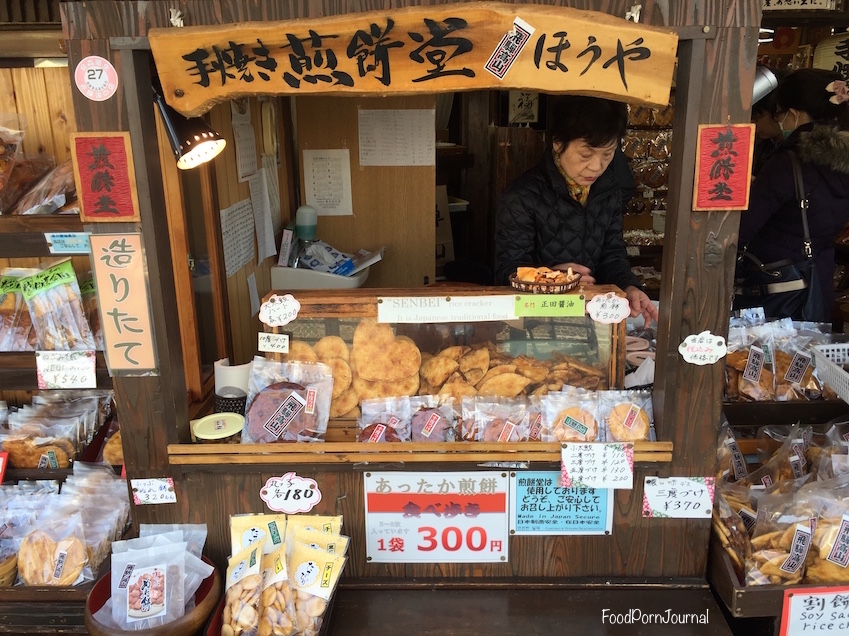
There was one stall selling steaming Hida beef buns, much cheaper than what I bought them for at Takayama Old Town!

I had read that Takayama-style ramen was a must-try and another blog Jo the Tart Queen recommended Musagosoba. Jo states that in Takayama, ramen is often referred to as Chinese style chuka soba, hence the soba in the name of the eatery. It took us a while to find the place and were lucky that it was open.

The only thing Musagosoba serves is the Takayama style shoyu ramen which only came in medium and large sizes (I’ve forgotten the prices). The bowl was filled with leeks, spring onion and menma (bamboo shoots). A very dark soy sauce based broth made with dried bonito. I found that it was a bit saltier than other ramen I’d had in Japan.

The thin ramen noodles were springy and kind of similar to two minute noodles.

After more sightseeing and a short rest back at our minshuku, we decided to have dinner somewhere close. We walked around to check out the menus of a few places before settling on Mikado. The restaurant was small with only a few wooden benches and one low traditional table sunken into the floor. We ordered roast fowl yakitori (forgot the price) to begin with. It tasted just like chicken but a tad gamier.

I chose Hida beef grill set (¥2,000 not including tax) as I needed one more hit of Hida beef before we left the Takayama region. This set came with rice, miso soup, pickled vegetables and some miso on a magnolia leaf to cook the beef on (aka hoba-miso). A small clay oven and grill was provided to cook the beef.

I just love that marbling on the beef.
 A close up shot of the hoba-miso below. Hoba-miso used to be a poor man’s food. It is humble yet tasty. The sweet miso paste was heated until it bubbled before the beef was placed on it. The miso wasn’t overly strong and had a lovely nutty flavour that enhanced the flavour of the beef.
A close up shot of the hoba-miso below. Hoba-miso used to be a poor man’s food. It is humble yet tasty. The sweet miso paste was heated until it bubbled before the beef was placed on it. The miso wasn’t overly strong and had a lovely nutty flavour that enhanced the flavour of the beef.

My sister chose the tonkatsu set (¥1,300 not including tax) which came with salad, rice and miso soup. We found the Japanese like to put lots of mayonnaise in salad so it wasn’t as healthy as expected.

Our last meal in Takayama was breakfast at our B&B, Minshuku Kuwataniya. The cost of breakfast was in addition to the accommodation (I can’t remember how much extra). We were the only guests in the dining room that had requested breakfast at the minshuku so we had the place to ourselves. We received a printed set menu in English so we knew what was coming. Breakfast included some mushrooms and scallions on hoba miso, a portion of salmon, pickled vegetables, salad, nori, rice and some orange wedges. A simple but nutritious breakfast.

We then walked over towards the bus station to catch our bus to Shirakawa-go. We were early and needed to kill time at a few souvenir shops strategically placed around the bus station. Takayama was the only place we visited where I noticed Shinshu apple KitKats. There were also red bean and sake flavoured KitkKats available.

The bus station sold some drinks and snack foods, where I spotted these cute lollies designed to fit a mini bento box. Kawaii!

Shirakawa-go
Shirakawa-go is famous for its gassho-zukuri style thatched farmhouses in the UNESCO World Heritage site. My sister and I were there for one afternoon to wander through the village.

Although we found the site quite touristy with several souvenir shops, the steady incline to the view of the valley was well worth it with the beautiful mountains in the background.

There was an ice cream shop and souvenir store at the top and I couldn’t resist buying a half matcha / half vanilla soft serve ice cream cone.

On our way back to catch our bus, I stopped to grab a Hida beef potato. It was a well crumbed hash brown however I was disappointed with the very minimal amount of Hida beef inside. There are no restaurants in the town only a few stalls selling ice cream and snacks.

And that’s it for Tsumago, Takayama and Shirakawa-go. As we walked through the train station to catch the shinkansen, we saw our first ekiben kiosk (we probably passed by heaps but this was the first one that actually caught our attention). An ekiben is basically a bento box bought from a train station or train for those long distance train rides.

There are different sizes, shapes, fillings and prices. We didn’t buy an ekiben at this particular kiosk, but we did later on in our trip.

Next, we travelled north to Kanazawa…
If you want more random photos and updates about food, I’m on Facebook, Twitter and Instagram
Facebook: /foodpornjournal
Twitter: @foodpornjournal
Instagram: /foodpornjournal
